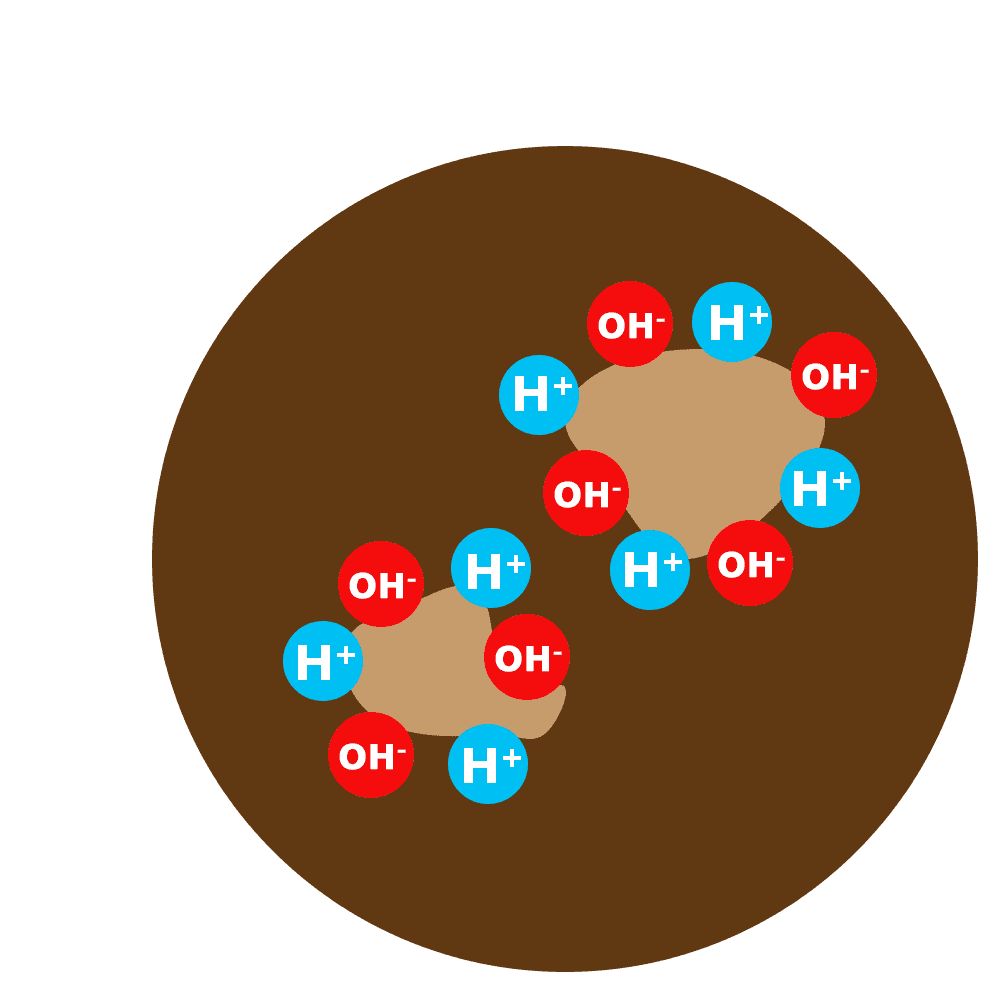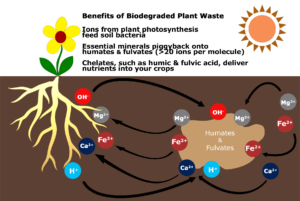Nutrient Cycling
Natural Biota’s product line contains bacteria that break down carbon from crop fall-off: They break down lignin and cellulose into soluble carbon (carbon that is dissolvable into water). In fact, this is what makes the rich dark color of our liquid fertilizers.
Without fungal activity, carbon quickly effuses back into the atmosphere and is lost from the soil (t < 2 years). Beneficial soil fungi, however, will retain much of the carbon for much longer periods of time (10 yr < t < 18 yr). This regenerative success takes time to establish and involves commitment. Regenerative agriculture also needs farmers to be aware of pesticides that harm the soil’s microbiota.
Beneficial soil fungi also retain water and facilitate soil clumping. Their network structures secure the soil from being washed away in a deluge. Fungal hyphae also circulate phosphorus, sugar and other molecules to your crops’ root hairs, where they can then be taken up into the plant.

Farming is more than 9 macro- & 11 micronutrients
Traditional plant nutrition courses continue to teach that soil only needs about 18 to 20 elements and nothing more. They do not teach that pesticides and herbicides kill natural organisms that are harmless, and by doing so, they also stop the exchange of signaling and various natural chemical cycles. They teach that only carbon dioxide is absorbed by the leaves of a plant. This is simply untrue. Innovative agronomists in the U.S., Mexico, Israel, and other regions, have established preferred fertilizer programs that center around extensive foliar delivery of nutrients. Others have focused on making sure that each year the soil accumulates 2% to 5% more carbon, year over year. Countries such as France even provide kickbacks to farmers for doing so. Still others have had great results with vermiculture.
Consider this: If a phosphorus ion is only 1mm from your crop’s root hair, it cannot be absorbed.
After a full growing cycle supplemented by Natural Biota products, your rewards will be extensive and measurable. With hardy plants that have received more than the fundamental nutrients (promulgated by the green revolution as the only ones that matter), the skin of your fruit will be stronger and shinier, helping you to reduce transportation and spoilage loss. You will make more money due to higher BRIX content and better sugar-to-acid ratios.

Fulvates and Humates
Fulvates and humates are important carbon-rich molecules found in our our products. Their acid forms, fulvic and humic acid, are equally important. These organic molecules have several negatively charged pockets, enabling cations to join these large carbon molecules. Without this attraction between negative pockets (fields with a resonance that is primarily negative) and positively charged ions, the nutrients cannot get delivered into your crop. One way you can monitor your progress, year over year, when using our products, is to document your cation exchange capacity (CEC).
The chemical exchange of ions (anions and cations) between the various organisms on your cropland is what comprises your soil’s microbiota, and soil ecosystem.
